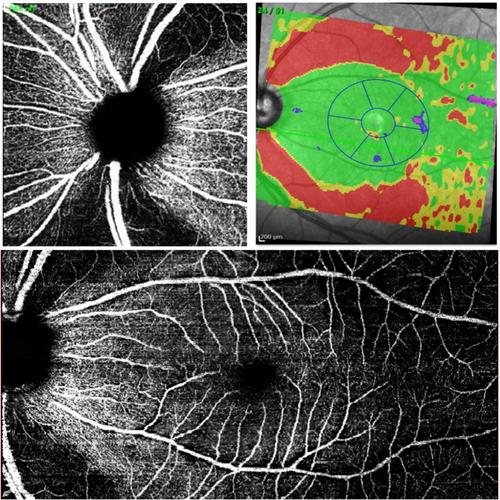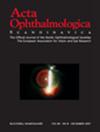Genetic risk of glaucoma is associated with vascular and retinal nerve fibre wedge defects
Abstract
Purpose
To evaluate the association between localised vascular and retinal nerve fibre layer (RNFL) loss and genetic risk for glaucoma and cardiovascular disease using polygenic risk scores (PRS).
Methods
858 eyes were included from 455 individuals with suspect and early manifest primary open angle glaucoma. Eyes were characterised as having localised vascular and/or RNFL wedge-shaped defects by scrutiny of optical coherence tomography angiography (OCTA) and OCT images, respectively. Investigations included associations with pre-established scores for genetic risk of glaucoma and cardiovascular disease in the context of glaucoma risk factors and systemic vascular disease outcomes.
Results
Higher genetic risk for glaucoma was associated with both vascular wedge defects and RNFL defects (p < 0.001 and p = 0.020, respectively). A greater genetic risk of glaucoma was associated with the presence of multiple vascular wedges per eye (p = 0.005). Glaucoma progression based on global RNFL loss was associated with vascular and RNFL wedge defects (p ≤ 0.001 and p = 0.008, respectively). The glaucoma PRS was significantly associated with vascular, but not RNFL, wedge defects after controlling for disc haemorrhage (p = 0.007 and p = 0.070, respectively). Vascular wedge defects were not related to the cardiovascular PRS.
Conclusion
Individuals with a higher genetic risk of glaucoma based on the PRS were more likely to have retinal vascular defects, as well as structural glaucomatous loss, but this did not relate to systemic cardiovascular risk. This possibly implies a local pathophysiology for the vascular defects in some cases, which may have clinical relevance in the early stages of glaucoma and in individuals at high genetic risk.


 求助内容:
求助内容: 应助结果提醒方式:
应助结果提醒方式:


